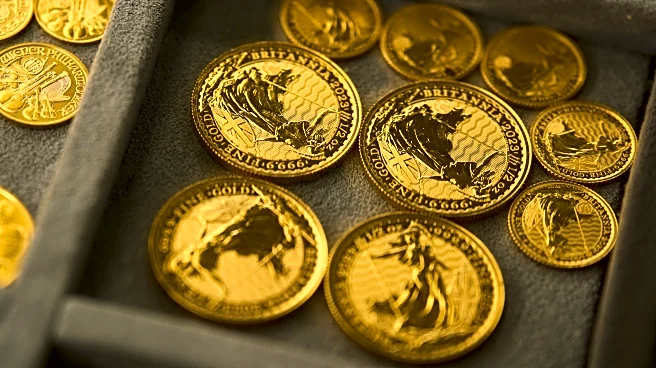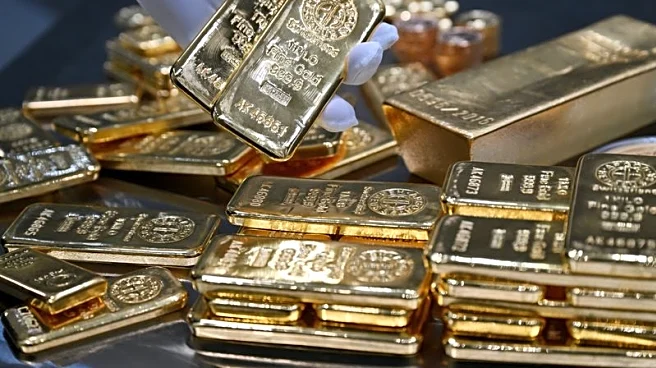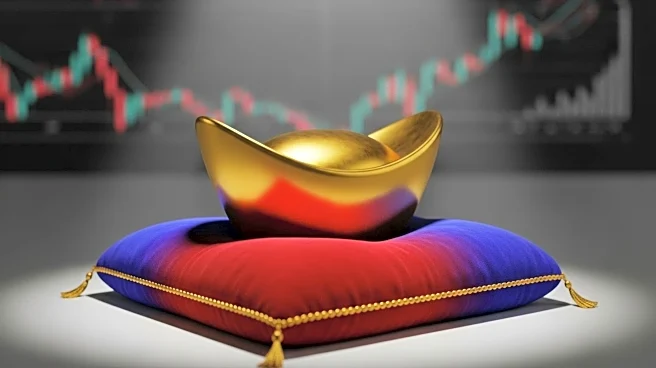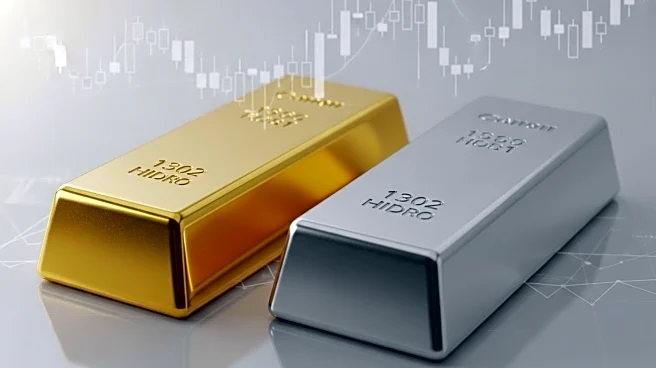What is the story about?
What's Happening?
Gold prices have surged by 53% this year, reaching a record high of over $4,000 an ounce. This increase is driven by global geopolitical and economic risks, including conflicts in Europe and the Middle East, and economic uncertainties in the U.S. under President Trump's administration. Central banks are on track to purchase 1,000 metric tons of gold in 2025, marking the fourth consecutive year of significant acquisitions as they diversify from dollar-denominated assets. The rally in gold prices is also supported by low borrowing costs and delayed rate hikes, prompting investors to view gold as a safe store of value.
Why It's Important?
The surge in gold prices reflects widespread investor anxiety over geopolitical tensions and economic instability. As traditional safe-haven assets like U.S. Treasuries become less attractive due to low yields, gold is increasingly seen as a reliable alternative. This trend indicates a lack of confidence in the global economic outlook and suggests potential challenges for policymakers in stabilizing markets. The continued rise in gold prices could have significant implications for global financial markets and central bank strategies.
What's Next?
If the current geopolitical and economic conditions persist, gold prices may continue to rise, potentially reaching new highs in 2026. Investors and policymakers will closely monitor developments in U.S. trade policies, inflation rates, and global conflicts, as these factors will influence future market dynamics. A shift in U.S. economic policies or a resolution to ongoing conflicts could alter investor sentiment and impact gold's trajectory.
AI Generated Content
Do you find this article useful?














